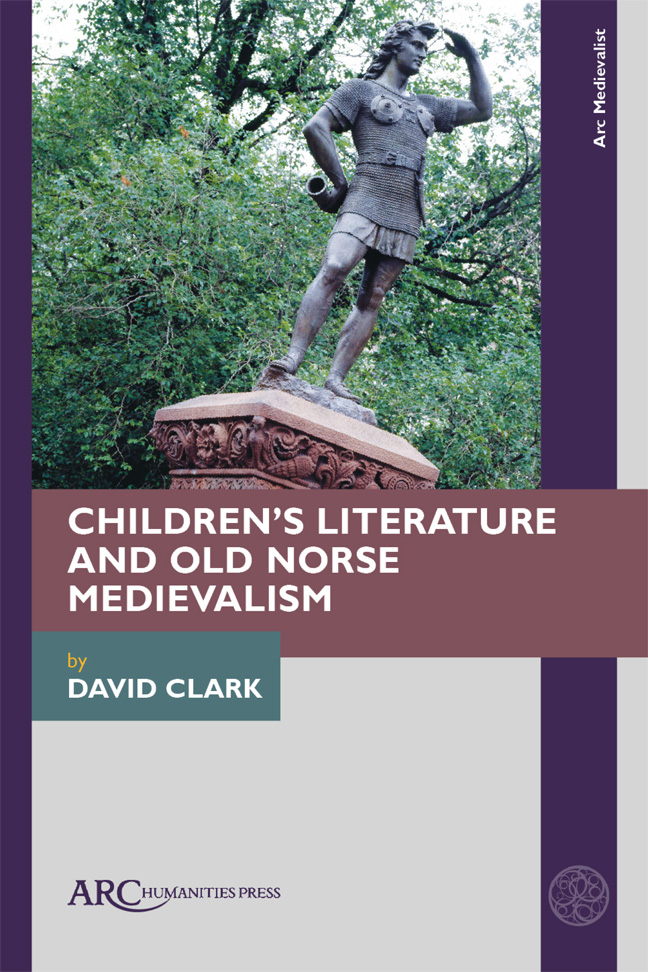Book contents
- Frontmatter
- Contents
- Acknowledgements
- Dedication
- Introduction: The End
- 1 Age-Related Categories
- 2 Generic Categories
- 3 Transformational Fantasy
- 4 Horned Helmets and Comic Anachronism
- 5 Viking Reputation
- 6 Runes and Magic
- 7 The Power of Story
- 8 Race and Ethnicity
- 9 Heroism
- 10 Viking Masculinity
- 11 Viking Femininity
- 12 Viking Sex and Gender
- 13 Bowdlerization
- 14 Sexuality
- 15 Ecological Threat
- 16 Norse Medievalism in Alan Early's Father of Lies Trilogy
- 17 Avoiding the End of Days: K. L. Armstrong and M. A. Marr's Blackwell Pages
- 18 Rick Riordan's Magnus Chase Series and Norse Medievalism
- Conclusion
- Select Bibliography of Frequently Cited Works
- Index
15 - Ecological Threat
Published online by Cambridge University Press: 17 February 2024
- Frontmatter
- Contents
- Acknowledgements
- Dedication
- Introduction: The End
- 1 Age-Related Categories
- 2 Generic Categories
- 3 Transformational Fantasy
- 4 Horned Helmets and Comic Anachronism
- 5 Viking Reputation
- 6 Runes and Magic
- 7 The Power of Story
- 8 Race and Ethnicity
- 9 Heroism
- 10 Viking Masculinity
- 11 Viking Femininity
- 12 Viking Sex and Gender
- 13 Bowdlerization
- 14 Sexuality
- 15 Ecological Threat
- 16 Norse Medievalism in Alan Early's Father of Lies Trilogy
- 17 Avoiding the End of Days: K. L. Armstrong and M. A. Marr's Blackwell Pages
- 18 Rick Riordan's Magnus Chase Series and Norse Medievalism
- Conclusion
- Select Bibliography of Frequently Cited Works
- Index
Summary
ALTHOUGH THE THREAT of ecological disaster, along with the importance of respecting the natural world, is a long-standing theme in children's literature in gen-eral, since the millennium ecological concerns have become increasingly pressing, as the effects of human activities on the world have become clear, leading some to dub this the Anthropocene epoch. Norse medievalist novels have not taken up the theme anywhere near as widely as other areas of children's literature. Nonetheless, contempo-rary ecological anxieties sometimes link to, or colour the representation of, Ragnarok in prominent ways.
In The Sleeping Army, for instance, Francesca Simon transforms Ragnarok into an apocalyptic confrontation based not on fiery destruction, but rather on ice and water. Her gods lament:
when we die the weeping world will die with us. The ice is melting…The waters are rising. The Frost Giants will rise up, freed from their icy bonds. Then the Axe-Age and the Wind-Age and the Wolf-Age will be upon the earth. (59)
This description is a complex mix of imagery from the myths of Ragnarok and of Balder's death, where all the world (except Loki) weeps for the god. Here the world's tears are for all the gods, represented as melting ice and rising waters which recall the predicted results of global warming in our world.
The threat of a new Ice Age can also be seen in Neil Gaiman's short novel Odd and the Frost Giants (2008), written for World Book Day. Thor, Odin, and Loki appear as bear, eagle, and fox respectively, having been transformed by the Frost Giants, and who thus need Odd's help to regain their powers and drive back the ice-sheets that cover the world when the giants win the endless contest.
Arrowhead
Ruth Eastham’s Arrowhead (2014), though set in modern Norway, was inspired, the author tells us, by two factors. First, by the ruins at Lindisfarne and their evocation of the raids of the Vikings and their stories, but second, by a melting Norwegian glacier and the thought of what climate change might “unleash besides weird weather and rising seas.”
- Type
- Chapter
- Information
- Children's Literature and Old Norse Medievalism , pp. 125 - 128Publisher: Amsterdam University PressPrint publication year: 2023

